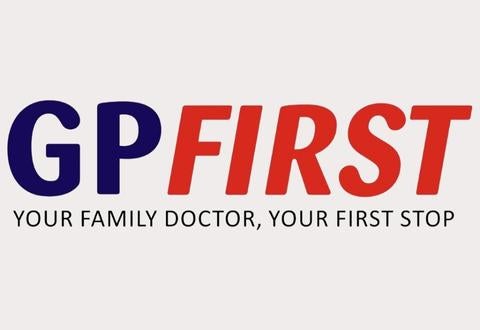Changi General Hospital will NEVER ask you to transfer money over a call. If in doubt, call the 24/7 ScamShield helpline at 1799, or visit the ScamShield website at www.scamshield.gov.sg.
Call For Collaboration
Healthcare innovation is imperative to address the range of health challenges posed by a rapidly aging population including increasing healthcare services demand, shrinking healthcare workforce and rising healthcare costs. Embark with us on an innovation journey at the Changi General Hospital Office of Innovation!
List of Problem Statements
Below is a list of problem statements curated from our CGH clinical and operational champions! We invite partners to collaborate with us to develop innovative solutions to address these problem statements. Contact us!
| Serial No | Project Title | Description |
| PS001 | Removing a stuck ring on finger that is injured or infected | Stuck rings on fingers that are swollen from medical complications are a special challenge that require time, effort and care to remove. They are often painful and also involve lack of blood supply to the digit that can compromise survival of the digit. As ischemia sets in, it contributes to further inflammation and swelling thus setting up a vicious cycle. |
| PS002 | Prevention of patient fall from radiological examination couches during procedures in the department | As a routine, patients undergoing radiological procedures often have to be left alone on the procedure couches or tables while being watched by the radiographer/s from the operating consoles a distance away. There are certain groups of patients that may be at higher risk of falls because of their lack of mental alertness, age or medical conditions. |
| PS003 | Better accuracy for Extra Corporeal Shock Wave Therapy (ESWT) emitter | Focal Extra Corporeal Shock Wave Therapy (ESWT) is an established treatment modality for degenerative tendon-bone junction lesions, such as plantar fasciitis, tennis / golfer's elbow, patellar tendinosis, and Achilles enthesopathy. Efficacy is dependent on delivering the appropriate intensity ESWT accurately to the lesion. |
| PS004 | Auditory training after cochlear implants | Deterioration in hearing with advancing age is one of the most prevalent conditions affecting the adult population. For these individuals with severe to profound sensorineural hearing loss, a cochlear implant (CI) is often the best option for better hearing. A cochlear implant enables a person to have access to the sounds, but the person may not be able to interpret the sounds and understand what is being said right away. Cochlear implant recipients need to undergo a period of intensive auditory rehabilitation therapy for maximal benefits from the implants. Currently, these sessions are conducted with specialised audiologists and speech therapists in hospitals over face-to-face sessions, and for suitable patients over tele-rehabilitation sessions. Due to the heavy commitment for home program and the lack of immediate objective feedback on performance, compliance to home therapy remains a huge challenge. |
| PS005 | Transportation of patients | There are fewer Patient Service Associates (PSA) to provide portering manpower in recent times. Nurses do assist but the nursing manpower can be better allocated for ward care. During transportation between wards or procedures, patients may be in distress and uncomfortable. They would like to ask questions about their stay or procedures they might undergo. PSAs may not know enough to provide such information. In addition, sudden deterioration during transportation may not be detected in time. |
| PS006 | Optimal mammography positioning | Breast cancer is the second most prevalent cancer in women worldwide and the number one most frequent cancer amongst women in Singapore, accounting for 29% of all cancer cases diagnosed in women. Mammography is the primary screening tool for early breast cancer detection. Correct mammographic positioning technique and optimal breast compression are key factors affecting image quality. |
| PS007 | Use of trolley beds during trauma and medical resuscitations in the Accident & Emergency Department | Resuscitation of unstable patients occur daily and frequently at any Accident & Emergency (A&E) department; it is one of the core tasks of the A&E. Modern resuscitation takes a team approach, for example, doctors and nurses are assigned roles to cover Airway, Breathing and Circulation tasks. The two most common team resuscitation scenarios are major trauma and out-of-hospital cardiac arrests. Currently, resuscitation for the above two scenarios are carried out using standard, commercially available A&E trolley beds. These trolleys are ubiquitous in A&E departments, and are multi-use, for all patients requiring resuscitation or bed rest. |
| PS008 | Extensive process during cardiopulmonary resuscitation | In cardiopulmonary resuscitation, multiple healthcare providers work in tandem rapidly to ensure a smooth protocolised resuscitation attempt. As part of the resuscitation process, a minimum of two nurses are required for protocolised drug delivery. One nurse has to manually prepare the correct drugs, dosages, dilution and drug labelling while the other performs administration and recording of drug delivery timing. This process may be hindered by insufficient staffing, as manpower is concurrently required for chest compression, defibrillation as well as airway management. A sequential correct drug delivery is vital to the success of resuscitation. |
| PS009 | Improve compliance to hand hygiene | Hand hygiene is the primary action to reduce health-care-associated infection and cross-transmission of antimicrobial-resistant pathogen. It is widely known that compliance with hand hygiene recommendations is poor in the hospital. |
| PS010 | Medication adherence among the community dwelling elderly | Ageing is associated with chronic medical conditions which translates to accumulation of regular daily prescription medications to control these chronic medical conditions. As Singapore faces the silver tsunami, the elderly are encouraged to live independently in the community while remaining well physically, mentally and socially. Medication non-adherence is a common problem, especially among the elderly who have numerous pills to take, multiple times a day. Medication-associated problems like drug-drug interactions, adverse effects and non-adherence cause significant morbidity and mortality and hospitalisations. |
| PS011 | Appropriate intervention for Acute back sprains | Patients with acute back sprains often appear at the Accident & Emergency department, many of which require support and exercise and not surgery. |
| PS012 | Reducing reliance of manpower in toilet cleaning | Increasingly challenging to find manpower to clean the toilets in the hospital. |
| PS013 | Training for Radiography Procedures | Real-time imaging (or radiofluoroscopy) such as Barium Meal Study and Barium Enema are not only high-dose procedures, but also labour-intensive as they require the operator to manoeuvre both machine and patient to obtain the images in real-time. Therefore, both operator and patient will need to be in close proximity to the radiation source during the procedure, and the longer the procedure takes, the more radiation dose (primary and scattered radiation) each will receive. Training for junior operators and medical officers (MOs) is a long process, as trainees need to be familiar with equipment and also patients' anatomical images displayed during the fluoroscopic procedure. Hence, the current training method is not ideal as the trainer has to be in close proximity to the trainee, the patient and the fluoroscopy machine during the training process. The longer each training session takes, depending on how complex the patient's conditions are, the greater the radiation risk and discomfort to the patient. |
| PS014 | Preparation of Gelfoam for embolisation | Gelfoam is a degradable agent that is commonly used by interventional radiologists to embolise (i.e. occlude by way of injection through tiny catheters) tumours or bleeding blood vessels. Gelfoam comes in large sheets and need to be cut into pieces small enough to fit into blood vessels that are 1 to 2mm in size. The current method of Gelfoam preparation is time-consuming and does not allow for accurate control of particle sizes. |
Contact Information
Changi General Hospital, 2 Simei Street 3, Singapore 529889
(65) 6788 8833
Mondays to Fridays: 8:30am to 6:00pm
Stay Healthy With
© 2025 SingHealth Group. All Rights Reserved.


















